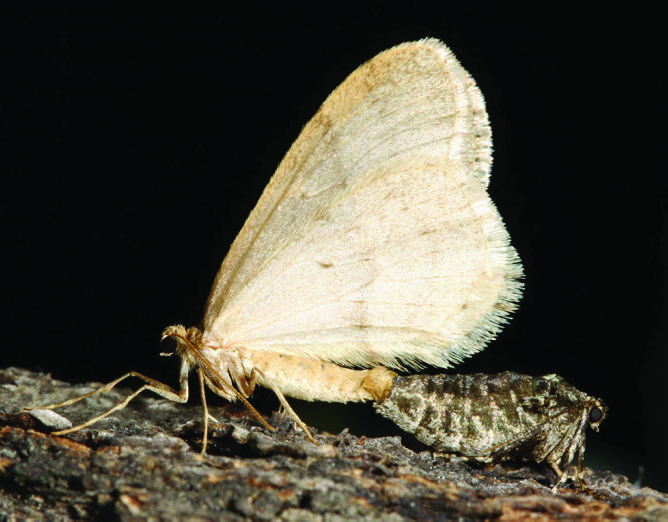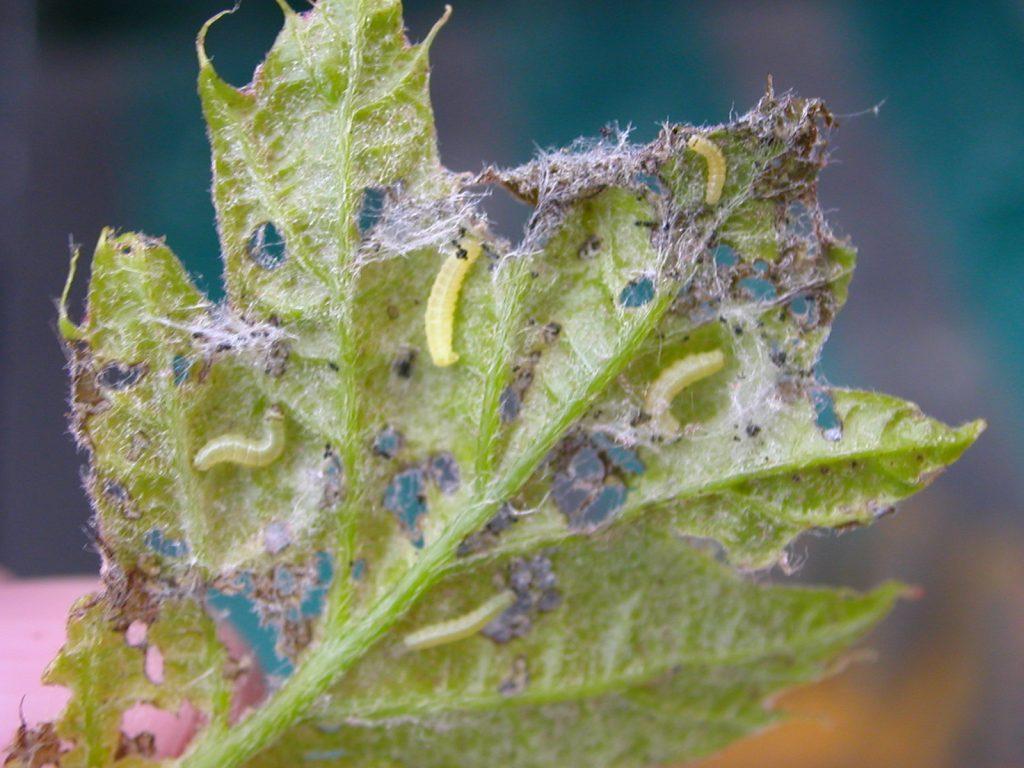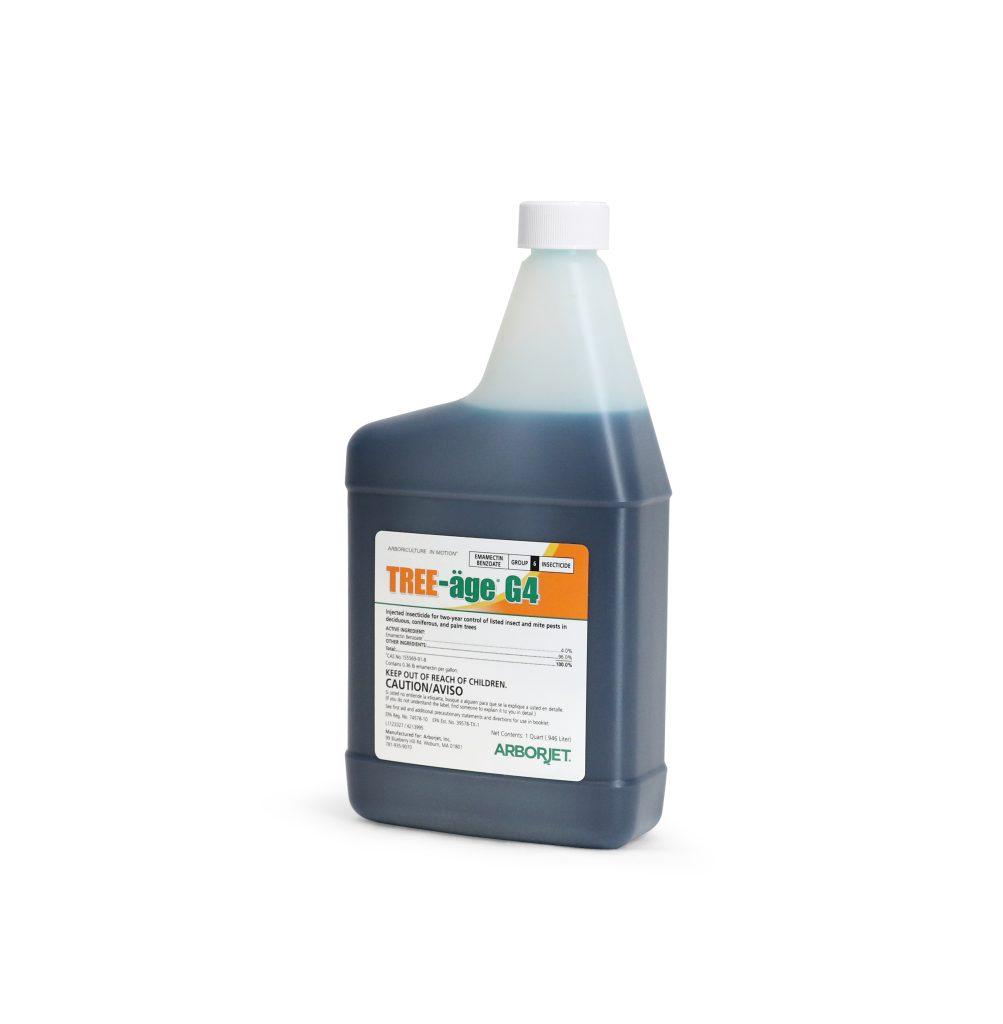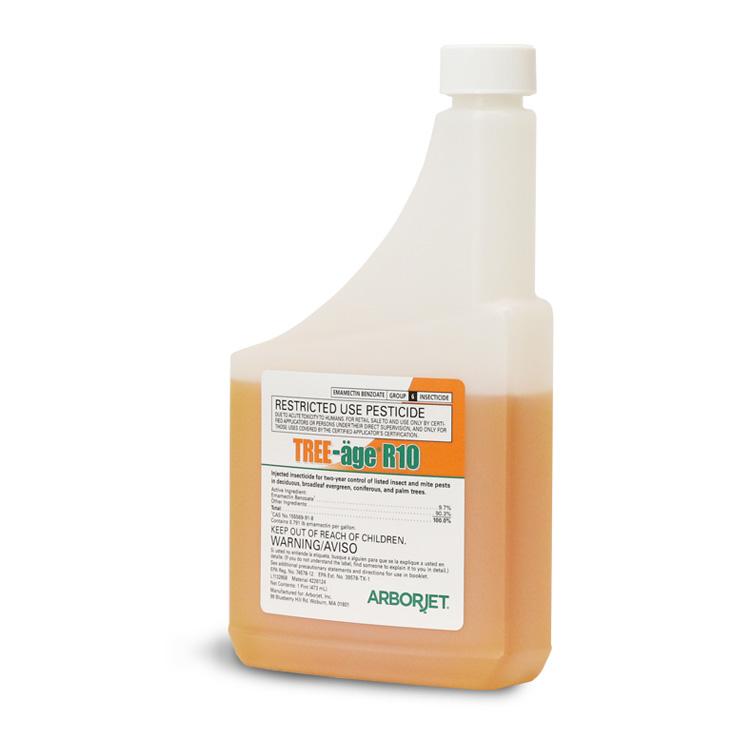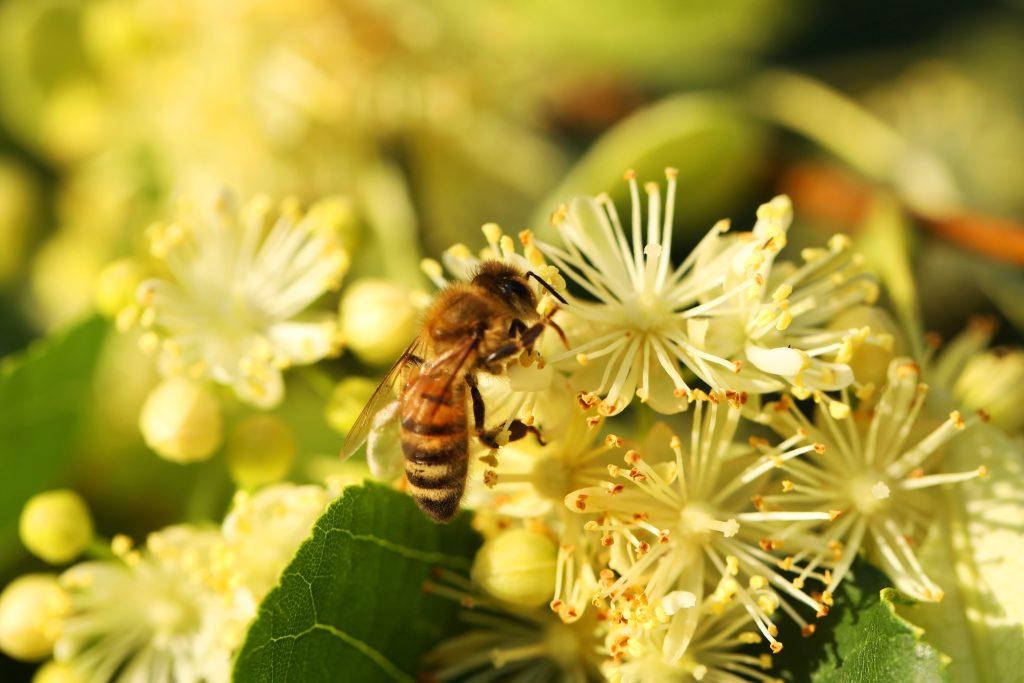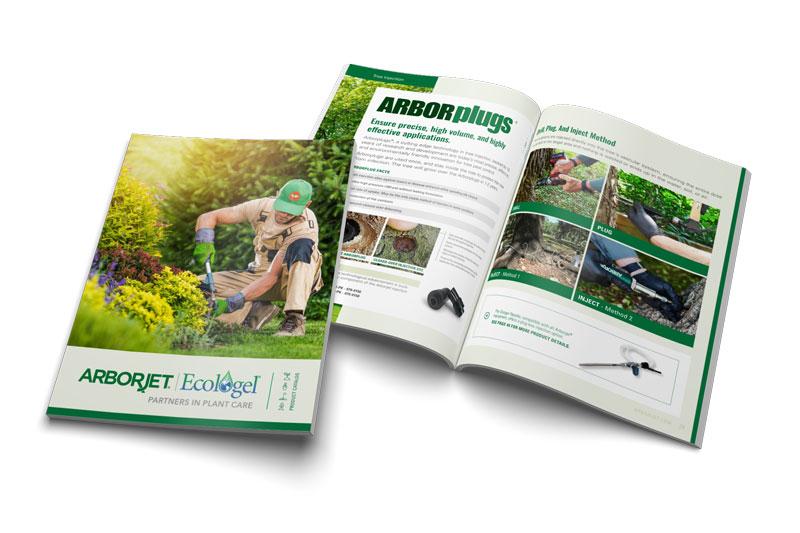Winter Moth
Winter Moth (WM, Operophtera brumata) causes severe defoliation of hardwood trees.
Winter Moth is appropriately named, as adult moths are generally active from November through January. The larvae begin feeding early on developing leaves; severe infestations will cause noticeable tree defoliation. In June, they drop to the ground to pupate in the soil until the fall. Canadian research has shown that four consecutive years of defoliation can ultimately lead to tree mortality.
Common Symptoms
Early detection of WM is difficult, as the first instar larvae begin feeding while the pre-formed leaf is still in the bud. The first symptoms will be visible only after buds break and leaves unfurl, revealing small feeding holes in the leaves; at this point, the larvae are still generally too small to be seen. Over the early weeks of the spring, the feeding damage on the leaf will become more obvious and the caterpillars can grow to a visible size. The WM caterpillars may also be seen descending from the canopy on silken threads. Extensive populations of WM can cause severe defoliation of the tree.
Treatments
Trunk injections of TREE-age® (G4 or R10) or ACE-jet™ should be made in early spring, before buds break, when WM outbreaks are expected. TREE-age® can provide protection for 2 years.
When To Treat
Generally, the best seasons for injection are fall and spring, while trees are transpiring. The environmental conditions that favor uptake are adequate soil moisture and relatively high humidity, and the soil temperature should be above 40 degrees F. Hot weather or dry soil conditions will result in a reduced rate of uptake, so trees should be watered if applications occur when soil is extremely dry. Tree health will also affect treatment efficacy, so assess tree health prior to treating. For example, a declining tree (>50% canopy dieback) is a poor candidate for treatment.
When using ACE-jet it is best to treat in early spring, before buds break, when WM outbreaks are expected. Alternatively, treat when leaf injury first appears, or when caterpillars are first observed. One application is sufficient to control WM. ACE-jet remains active to protect the tree canopy for approximately 3 to 5 weeks.
If you decide to treat with an injection of TREE-äge G4 or R10, which can control WM for up to two years. TREE-äge can be injected as long as the soil temperature is above 40 degrees F and below 90 degrees F.
What To Expect After Treatment
ACE-jet trunk injection in the spring will act very quickly and caterpillars will die rapidly. Monitor trees annually to determine the need for a repeat treatment.
TREE-äge may work more slowly through the tree’s vascular system but will have a longer residual protection time than ACE-jet, making it ideal for multi-season protection. You will still want to monitor the tree’s overall health to see if reapplication is necessary.
References And Photo Credits
Main Photo of Winter Moth Caterpillar, taken by Milan Zubrik, Forest Research Institute – Slovakia, Bugwood.org
Adult Winter Moth, taken by: Gyorgy Csoka, Hungary Forest Research Institute, Bugwood.org
Winter Moth Eggs, taken by: Gyorgy Csoka, Hungary Forest Research Institute, Bugwood.org,
Caterpillar feeding Damage, taken by: Joe Elkinton, U-Mass-Amherst


